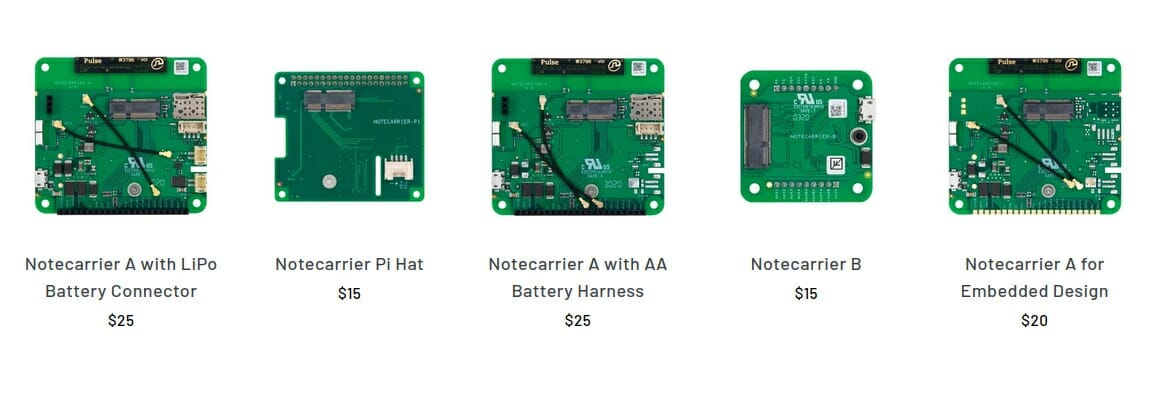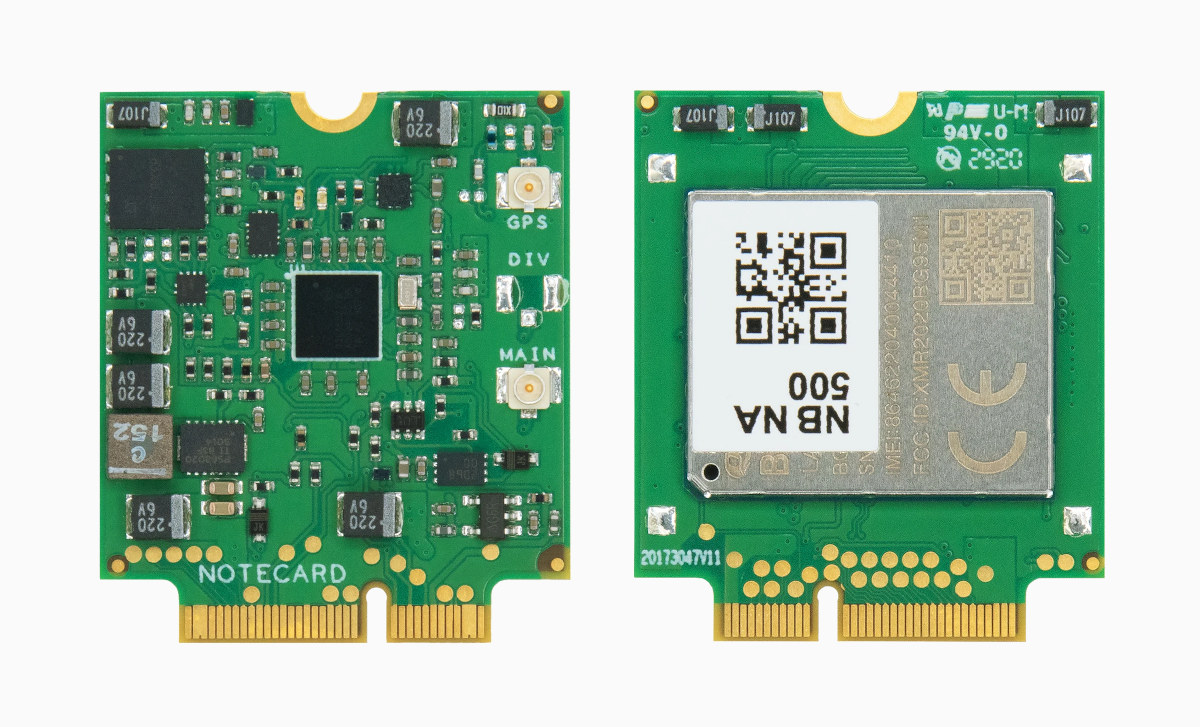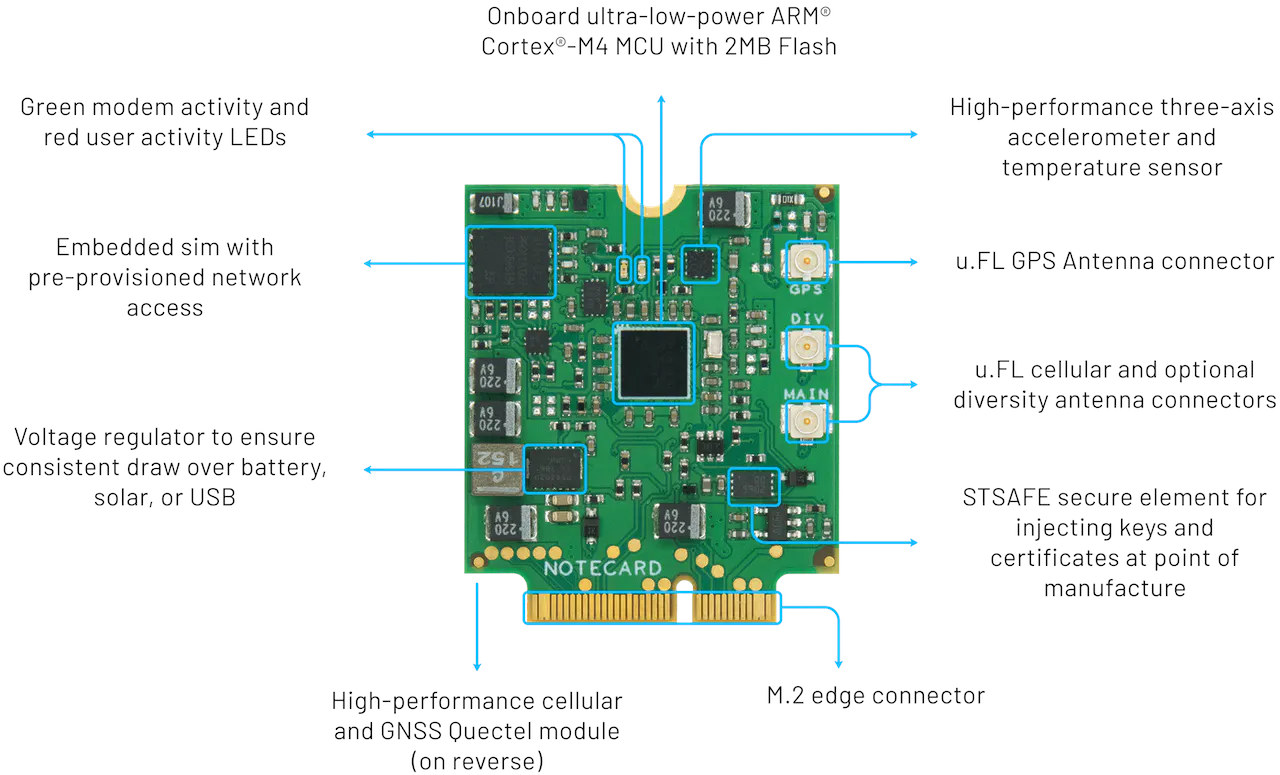If the IoT is ever going to take off, it needs low-cost hardware and connectivity. LoRaWAN is free, apart from the hardware costs, but for projects that need wider coverage and/or higher bitrate cellular connectivity is the way to go and we’ve seen in the past that Hologram offers a free developer SIM card for global IoT projects plus some low-cost cellular IoT plans, as well as 1CNE plans to offer a 10-year plan for 10 Euros.
Blues Wireless has taken a different approach as they combine hardware and cellular connectivity with their Notecard LTE-IoT modems (LTE Cat 1/Cat M or NB-IoT) shipping for 10 years of connectivity for up to 500MB data.
Notecard has four variants with the following key features and specifications:
- MCU – Arm Cortex-M4 MCU with 2MB flash
- Cellular connectivity
- NOTE-NBGL-500 – Narrowband Cat-M/NB-IoT/GPRS (Global) via Quectel BG95-M3 modem
- NOTE-NBNA-500 – Narrowband Cat-M/NB-IoT (North America) via Quectel BG95-M1 modem
- NOTE-WBEX-500 – LTE Cat-1 (Global) via Quectel EG91-EX modem
- NOTE-WBNA-500 – Wideband LTE Cat-1 (North America) via Quectel EG91-NAX modem
- Embedded SIM onboard
- 2x u.FL connectors for cellular plus optional diversity antenna
- GNSS – Integrated GPS (part of Quectel module) with u.FL GPS antenna connector
- Sensor – 3-axis accelerometer and temperature sensor
- Security – STSAFE Secure element with a factory-installed ECC P-384 certificate provisioned at chip manufacture.
- Host Interface – M.2 edge connector
- Misc – Modem and user LED’s
- Power Supply – Built-in voltage regulator supporting USB, battery, or solar inputs
- Power Consumption – Designed to operate on battery power, be “always-on” to maintain time & location, while typically drawing less than 8µA, when idle.
- Dimensions – 35 x 30mm
- PTCRB Certifications
All modules are bundled with 10-years and 500MB of cellular data. There’s no need to pay for cellular subscriptions, SIM fees nor monthly minimums.
The company also offers a range of carrier boards for people not wanting to design their own custom baseboards for Notecard M.2 module that include support for LiPo or AA battery, Raspberry Pi HAT, a minimal board with micro USB, and one model designed for “embedded design”, meaning integration into end products.

Blues Wireless Notecard sells for $49 to $69 depending on the model, but all include a 10-year data plan with 500 MB, and the Notecarrier boards are available for $15 to $20.
Via Hackster.io

Jean-Luc started CNX Software in 2010 as a part-time endeavor, before quitting his job as a software engineering manager, and starting to write daily news, and reviews full time later in 2011.
Support CNX Software! Donate via cryptocurrencies, become a Patron on Patreon, or purchase goods on Amazon or Aliexpress






